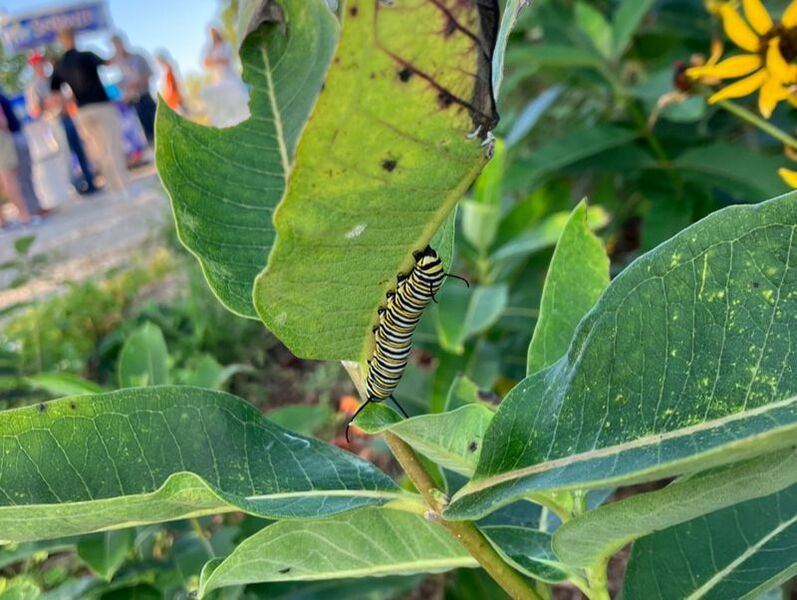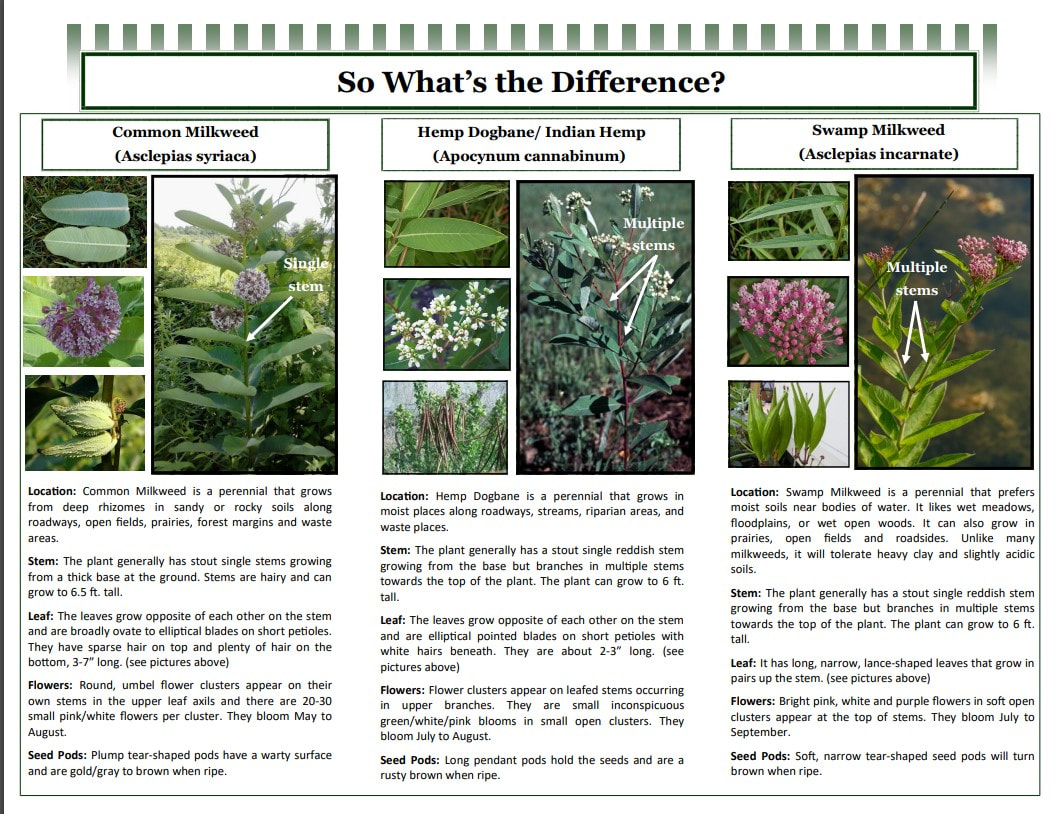|
When we see a bright orange and black butterfly, many of us will recognize that iconic coloration of the beautiful monarch butterfly. Monarchs have captured the hearts of many an admirer with their amazing powers of metamorphosis, pollination, and migration. Yet the secret to their success all lies with having a good meal to start off! And when you are a monarch caterpillar freshly hatched from your egg, that meal can only come from the milkweed plant. Milkweed species occur across almost all regions of the continental United States, except parts of Washington, Oregon, and Alaska. Milkweed is also native to southern Canada and Mexico. Of the 17 milkweed species native to Ohio, there are 10 species which serve as host plants for monarchs. Common milkweed (Asclepias syriaca) and swamp milkweed (Asclepias incarnate) are two of those species. Another common species which occurs and is a good nectar source for adult butterflies but does not serve as a caterpillar host is hemp dogbane (Apocynum cannabinum). These different milkweed perennials differ from one another in a couple of structural ways. Common milkweed has a single stem that is hairy and can reach 6.5 feet tall. Hemp dogbane and swamp milkweed both have multiple stems, but the leaf pattern is different. Hemp dogbane has leaves that grow opposite each other on the stem while swamp milkweed has long, narrow leaves that grow in pairs up the stem. While there are multiple subfamilies of milkweed, the milkweeds in the subfamily Asclepias, like the common and swamp milkweeds, are considered host plants for the monarch butterfly. As host plants, they are the only plants that monarchs can lay eggs on because these milkweeds are the only food source of the monarch’s distinctive yellow and black striped caterpillar. Natural chemicals monarchs ingest from milkweed in this larval stage of their lifecycle also protect them from predation. The milkweed plant starts the monarch off on its amazing transformational journey. An adult female will lay eggs on the milkweed, that egg will hatch into a leaf munching caterpillar (larva stage), that caterpillar will form a J shape and then spin a chrysalis (pupa stage), and finally an adult butterfly will eclose out of the chrysalis to start the cycle over again. The adult monarchs we see in Ohio at the end of summer are known as the super generation because these are the monarchs that will migrate all the way to Mexico to overwinter. That’s a lot of motion! Do you want to help be a champion for monarchs? Consider planting milkweed on your property! Already have milkweed plants? Consider collecting your brown seed pods between September and November and dropping them off at the Warren County SWCD office as part of the Milkweed Seed Pod Collection drive we do in conjunction with the Ohio Pollinator Habitat Initiative (OPHI). Learn more at https://www.warrenswcd.com/milkweed-seed-pod-collection.html.
40 Comments
|
Details
Author:
|
|
|
Contact:PHONE: (513) 695 - 1337
EMAIL: [email protected] HOURS: Monday - Friday 7:30am - 4:00pm (except holidays) Connect:Warren County Soil & Water Conservation District Copyright © 2016
Warren SWCD Privacy Notice. Emails are serviced by Constant Contact. Constant Contact's Privacy Notice. |



